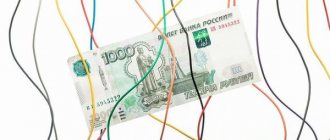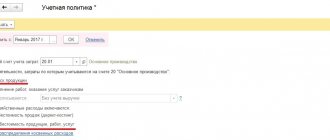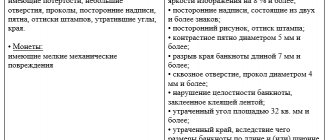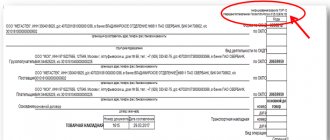Accounting entries
The receipt of materials into the organization is carried out under supply contracts, by manufacturing materials by the organization, making a contribution to the authorized (share) capital of the organization, receiving the organization free of charge (including a gift agreement). Materials include raw materials, basic and auxiliary materials, purchased semi-finished products and components, fuel, containers, spare parts, construction and other materials.
The following are accounting entries reflecting the receipt of materials into the organization.
- Accounting for receipt of materials under a supply agreement. Accounting entries
- Accounting for receipt of materials based on advance reports. Accounting entries
- Accounting for the receipt of materials under an exchange agreement. Accounting entries
- Accounting for receipt of materials under constituent agreements. Accounting entries
- Accounting for free receipt of materials. Accounting entries
- Accounting for the receipt of materials produced in-house
List of accounts involved in accounting entries:
|
|
| Account Dt | Kt account | Wiring Description | Transaction amount | A document base |
| Postings reflecting the accounting for the supply of materials with payment to the supplier after receipt of the materials | ||||
| 10 | 60.01 | The receipt of materials from the supplier to the organization's warehouse is reflected. Subaccount 10 is determined by the type of materials received | Cost of materials excluding VAT | Consignment note (form No. TORG-12) Receipt order (TMF No. M-4) |
| 19.3 | 60.01 | The amount of VAT related to the materials received is reflected. | VAT amount | Consignment note (form No. TORG-12) Invoice |
| 68.2 | 19.3 | The VAT amount applies to reimbursement from the budget. Posting is done if there is a supplier invoice | VAT amount | Invoice Purchase book Consignment note (form No. TORG-12) |
| 60.01 | 51 | The fact of repayment of accounts payable to the supplier for previously received materials is reflected. | Purchase price of goods | Bank statementPayment order |
| Postings for accounting for the supply of materials on prepayment | ||||
| 60.02 | 51 | Prepayment to the supplier for materials is reflected | Advance payment amount | Bank statementPayment order |
| 10 | 60.01 | The receipt of materials from the supplier to the organization's warehouse is reflected. Subaccount 10 is determined by the type of materials received | Cost of materials excluding VAT | Consignment note (form No. TORG-12) Receipt order (TMF No. M-4) |
| 19.3 | 60.01 | The amount of VAT related to the materials received is reflected. | VAT amount | Consignment note (form No. TORG-12) Invoice |
| 68.2 | 19.3 | The VAT amount applies to reimbursement from the budget. Posting is done if there is a supplier invoice | VAT amount | Invoice Purchase book Consignment note (form No. TORG-12) |
| 60.01 | 60.02 | The previously transferred prepayment is offset against the debt for the materials received. | Purchase cost of materials | Accounting certificate-calculation |
Carrying out an inventory of goods and materials
Inventory of inventory is a procedure that is periodically carried out at each enterprise and helps maintain order in accounting. During the inventory process, the actual presence of valuables at the enterprise is checked and compared with the accounting data.
The frequency of inventory is at least once at the end of the year. Also, the procedure can be carried out throughout the year if necessary, for example, during a control check or changing the person responsible for storing inventory items.
During the inventory, unusable materials are identified that are subject to further write-off.
The procedure for inventory inventory
The procedure for reconciling actual and accounting data is entrusted to a commission appointed by management. The commission usually includes financially responsible persons, accounting employees and representatives of the management team of the enterprise. The chairman of the commission is appointed as the head. The commission’s tasks include monitoring and organizing the inventory and proper documentation.
Documentation of inventory of goods and materials
First of all, the manager approves the inventory order. The text of the order specifies which values are subject to recalculation and reconciliation with accounting data, approves the composition of the inventory commission, and also sets the deadline for the procedure.
When checking and recounting materials, inventory lists are drawn up, in which a sequential list of all recalculated property is provided, indicating the name, article, actual quantity and other necessary indicators.
To account for materials stored in the warehouse, an inventory list of inventory items INV-3 is filled out.
These include:
- Inventory transferred for safekeeping to other organizations
- Inventory items that are in transit (that is, purchased from other enterprises, but have not yet reached the warehouse)
- Valuables sold and shipped from the warehouse for which payment has not yet been received from the buyer
- Valuables transferred for processing to other organizations
To account for these inventory items, fill out the following forms:
- INV-4 “Inventory report of shipped goods and materials”
- INV-5 “Inventory list of goods and materials accepted for safekeeping”
- INV-6 “Act of inventory of payments for inventory items in transit”
Information in these inventories and acts is entered on the basis of documents confirming the fact of transfer to custody, shipment to customers, purchase and payment from the supplier.
Upon completion of the inventory procedure, discrepancies between accounting data and actual data are identified, which are reflected in the matching sheet INV-19.
All this data is transferred to the accounting department. The accountant carries out the necessary actions and reflects the postings for capitalizing surpluses and writing off shortages.
Accounting for inventory results
Accounting for surplus:
Surpluses are inventory items that are actually available, but are not documented in any way.
Surplus inventory items are recognized as other income and are reflected in the credit of account 91. The surplus is credited to the debit of the materials accounting account (account 10).
The posting for accounting for surplus has the form: D10 K91.1.
Accounting for shortages:
Shortage of goods and materials are values that are listed at the enterprise according to documents, but are actually missing.
The shortfall must be written off to the credit of the materials account.
To account for shortages, account 94 “Shortages and losses from damage to valuables” is used.
The posting to reflect the shortage identified during the inventory process has the form D94 K10.
Within the limits of the norms, the shortage can be written off as a debit to production cost accounts. Wiring: D20 (23) K94.
If the culprit is identified, then the shortage is written off by posting D73.2 K94. Then the guilty person can independently deposit the amount of the shortage into the cash desk of the enterprise D50 K73.2, or the amount can be withheld from his salary D70 K73.2.
If the culprit is not identified, then the amount of shortage of materials is written off as other expenses using posting D91.2 K94.
Postings for material inventory:
| Debit | Credit | the name of the operation |
| Accounting for surplus | ||
| 10 | 91.1 | Excess materials are taken into account as other income |
| Accounting for shortages | ||
| 94 | 10 | The shortage of materials identified during the inventory was written off |
| 20 (23) | 94 | Shortage of materials within normal limits written off |
| 73.2 | 94 | The shortage of inventory items was written off to the account of the perpetrators |
| 50 | 73.2 | The guilty person reimbursed the amount of the shortfall in cash to the cash register |
| 70 | 73.2 | The amount of the shortfall is withheld from the salary of the guilty person |
| 91/2 | 94 | The shortfall was written off as other expenses due to an unidentified culprit |
Accounting for receipt of materials based on advance reports. Accounting entries
Below are accounting entries reflecting the accounting of receipt of materials from accountable persons on the basis of advance reports and the primary documents attached to them (delivery notes, invoices).
The receipt of materials from an accountable person can be reflected in two options:
- In the first option, a standard posting scheme is considered, reflecting the receipt of materials from account 71 “Settlements with accountable persons”. The disadvantage of this option is that the accounting does not reflect the supplier from whom the materials were received and for which VAT was refunded.
- In the second option, the receipt of materials is reflected in correspondence with account 60 “Settlements with suppliers and contractors” and further, the debt to the supplier is closed in correspondence with account 71 “Settlements with accountable persons”. With this reflection option, there is an additional opportunity to analyze supplies by supplier
| Account Dt | Kt account | Wiring Description | Transaction amount | A document base |
| A variant of accounting entries reflecting the receipt of materials from accountable persons according to the standard scheme | ||||
| 71 | 50.01 | The issuance of funds from the organization's cash desk to an accountable person is reflected. | Amount issued for reporting | Account cash warrant. Form No. KO-2 |
| 10 | 71 | The receipt of materials from the accountable person to the organization's warehouse is reflected on the basis of primary documents attached to the advance report. Subaccount 10 is determined by the type of materials received | Cost of materials excluding VAT | Consignment note (form No. TORG-12) Receipt order (TMF No. M-4) Advance report |
| 19.3 | 71 | The amount of VAT related to the materials received is reflected. | VAT amount | Consignment note (form No. TORG-12) Invoice |
| 68.2 | 19.3 | The VAT amount applies to reimbursement from the budget. Posting is done if there is a supplier invoice | VAT amount | Invoice Purchase book Consignment note (form No. TORG-12) |
| A variant of accounting entries reflecting the receipt of materials from accountable persons according to a scheme using a accounts payable account | ||||
| 71 | 50.01 | The issuance of funds from the organization's cash desk to an accountable person is reflected. | Amount issued for reporting | Account cash warrant. Form No. KO-2 |
| 10 | 60.01 | The receipt of materials from the supplier to the organization's warehouse is reflected on the basis of primary documents attached to the expense report. Subaccount 10 is determined by the type of materials received | Cost of materials excluding VAT | Consignment note (form No. TORG-12) Receipt order (TMF No. M-4) |
| 19.3 | 60.01 | The amount of VAT related to the materials received is reflected. | VAT amount | Consignment note (form No. TORG-12) Invoice |
| 68.2 | 19.3 | The VAT amount applies to reimbursement from the budget. Posting is done if there is a supplier invoice | VAT amount | Invoice Purchase book Consignment note (form No. TORG-12) |
| 60.01 | 71 | Reflects payment to the supplier by the accountable person for materials received | Purchase cost of materials | Accounting certificate-calculationAdvance report |
Postings for accounting of inventory items in accounting
Example 1. Purchase of goods and materials from a counterparty by bank transfer
The acquisition of inventories (MPI) by bank transfer is regulated by clauses 5-11 of PBU 5/01, clause 1 of Article 254 of the Tax Code of the Russian Federation.
The organization VESNA LLC purchases production materials from the supplier UYUT LLC for a total amount of 59,000 rubles, incl. VAT 18% - 9,000 rub.
Purchase of materials for non-cash transactions:
| Debit Account | Credit Account | Transaction amount, rub. | Wiring Description | A document base |
| 10.01 | 60.01 | 50 000 | Receipt of supplies | Consignment note (TORG-12) |
| 19.03 | 60.01 | 9 000 | VAT on purchased inventories included | Invoice received |
| 60 | 51 | 59 000 | Payment to the supplier for inventories | Bank statement |
| 68.02 | 19.03 | 9 000 | VAT is accepted for deduction | Book of purchases |
Example 2. Purchase of goods and materials for cash with VAT
The organization VESNA LLC issued funds to employee A.A. Ivanov. in the amount of 15,000 rubles. from the organization's cash desk for the purchase of goods and materials. The employee provided an advance report for the amount issued.
Purchasing materials through an accountable person posting:
| Debit account | Credit account | Transaction amount, rub. | Wiring Description | A document base |
| 71.01 | 50.01 | 15 000,00 | Issuance of funds to an employee on account for the purchase of goods and materials | Manager's order, Expense cash order (KO-2) |
| 10.09 | 71.01 | 12 711,86 | Employee's advance report on purchased inventory items | Advance report, Consignment note (TORG-12) |
| 19.03 | 71.01 | 2 288,14 | VAT on purchased inventory items has been taken into account | Invoice received |
| 68.02 | 19.03 | 2 288,14 | VAT is accepted for deduction | Book of purchases |
Example 3. Purchase of goods and materials for cash without VAT
The organization VESNA LLC issued funds to employee A.A. Ivanov. in the amount of 20,000.00 rubles from the organization’s cash desk for the purchase of inventory and materials. An employee purchased goods and materials in a retail store using a sales receipt without VAT and spent more than the issued funds by RUB 2,500.00. The employee submitted an advance report for the amount issued.
Purchase of materials without VAT through an accountable person posting:
| Debit account | Credit account | Transaction amount, rub. | Wiring Description | A document base |
| 71.01 | 50.01 | 20 000,00 | Issuance of funds to an employee on account for the purchase of goods and materials | Manager's order, Expense cash order (KO-2) |
| 10.09 | 71.01 | 22 500,00 | Employee's advance report on purchased inventory items | Advance report, Sales receipt |
| 71.01 | 50.01 | 2 500,00 | Issuance of funds to an employee (amount of overexpenditure according to the advance report) | Advance report, Expense cash order (KO-2) |
Example 4. Write-off of materials to main production
The organization VESNA LLC transfers 70 pieces of 4x4 boards into production for the manufacture of finished products. In accordance with the accounting policy, materials are written off at the average price.
According to the “4x4 Boards” nomenclature, the organization had a balance of 150 pieces for a total amount of 40,500.00 rubles:
- Let's calculate the average cost: 40,500.00 / 150 = 270.00 rubles;
- Let's calculate the cost of the material transferred to production: 70 * 270.00 = 18,900.00 rubles.
Write-off of materials to main production - postings and documents:
| Debit account | Credit account | Transaction amount, rub. | Wiring Description | A document base |
| 20.01 | 10.01 | 18 900,00 | Transfer of materials to production | Requirement-invoice for release of materials according to form No. M-11 |
Accounting for the receipt of materials under an exchange agreement. Accounting entries
The legal basis that determines the procedure for forming an exchange agreement is defined in Chapter 31 “Barter” of the Civil Code of the Russian Federation. The methodology for reflecting supply transactions under an exchange agreement is discussed in more detail in the article “Accounting for the purchase and sale of goods under an exchange agreement”
The cost of materials to be transferred is established based on the price at which, in comparable circumstances, the organization determines the cost of similar materials.
Below are accounting entries reflecting the accounting for the receipt of materials from suppliers under an exchange agreement with the usual procedure for transferring ownership of materials, in accordance with Article 223 “Moment of the emergence of the acquirer’s right of ownership under the agreement” of the Civil Code of the Russian Federation and Article 224 “Transfer of a thing” of the Civil Code of the Russian Federation.
| Account Dt | Kt account | Wiring Description | Transaction amount | A document base |
| 10 | 60.01 | The receipt of materials from the supplier under an exchange agreement is reflected. Subaccount 10 is determined by the type of materials received | Market value of materials excluding VAT | Invoice (TMF No. M-15) Receipt order (TMF No. M-4) |
| 19.3 | 60.01 | The amount of VAT related to the materials received is reflected. | VAT amount | Invoice (TMF No. M-15) Invoice |
| 68.2 | 19.3 | The VAT amount applies to reimbursement from the budget. Posting is done if there is a supplier invoice | VAT amount | InvoicePurchase book |
| 62.01 | 91.1 | The transfer of exchanged materials to the supplier under the exchange agreement is reflected | Market value of transferred materials | Invoice (TMF No. M-15) Invoice |
| 91.2 | 10 | The write-off of transferred materials from the organization’s balance sheet is reflected. Subaccount of account 10 is determined by the type of materials transferred | Cost of materials | Invoice (TMF No. M-15) Invoice |
| 91.2 | 68.2 | The amount of VAT accrued on the transferred materials is reflected | VAT amount | Invoice (TMF No. M-15) Invoice Sales book |
| 60.01 | 62.01 | The debt of the second party under the exchange agreement is offset | Cost of materials | Accounting certificate-calculation |
Accounting for receipt of materials under constituent agreements. Accounting entries
According to the constituent agreement, the founders (participants) contribute various types of property, including materials, to the authorized (share) capital of the organization. According to clause 8 of PBU 5/01 “Accounting for inventories”, the actual cost of inventories (materials) contributed to the contribution to the authorized (share) capital of the organization is determined based on their monetary value, agreed upon by the founders (participants) of the organization .
Based on the above provisions, the receipt of materials under the constituent agreement can be reflected in the accounting below with the following entries.
| Account Dt | Kt account | Wiring Description | Transaction amount | A document base |
| 10 | 75.1 | We reflect the receipt of materials under the constituent agreement. Subaccount 10 is determined by the type of materials received | Estimated cost of materials agreed upon by the founders | Receipt order (TMF No. M-4) Certificate of acceptance of transfer of materials |
| 19 | 83 | If the founder transferring materials to the authorized capital of the organization, in accordance with clause 3 of Article 170 of the Tax Code of the Russian Federation, restores VAT, the receiving party must make this posting | The amount of VAT restored by the founder | InvoiceAct of acceptance of transfer of materials |
Accounting for free receipt of materials. Accounting entries
In accounting, according to clause 16 of PBU 9/99 “Income of the organization,” income in the form of gratuitous receipt of property is recognized “as it is generated (identified).”
In tax accounting, according to paragraphs. 1 clause 4 of Article 271 “Procedure for recognizing income under the accrual method” of the Tax Code of the Russian Federation, income in the form of gratuitous receipt of property is recognized on the date the parties sign the property acceptance and transfer act.
According to clause 9 of PBU 5/01 “Accounting for inventories”, “the actual cost of inventories received by an organization under a gift agreement or free of charge ... is determined based on their current market value as of the date of acceptance for accounting.”
Based on the above provisions, the gratuitous receipt of materials can be reflected in the accounting below using the following entries.
| Account Dt | Kt account | Wiring Description | Transaction amount | A document base |
| 10 | 91.1 | We reflect the free receipt of materials. Subaccount 10 is determined by the type of materials received | Market value of materials on the date of acceptance for accounting | Receipt order (TMF No. M-4) Certificate of acceptance of transfer of materials |
Accounting 10: features of accounting
Account 10 is intended for accumulating accounting data on raw materials, supplies, spare parts and semi-finished products owned by the organization.
Taking into account materials for production purposes, an organization, as a rule, reflects transactions for the receipt and write-off of inventory items in correspondence with production accounts:
| Debit | Credit | Description | Document |
| 20 (23, 29) | 10 | Materials transferred to the main (auxiliary, servicing) production are written off | Request-invoice |
| 10 | 28 | Accepting the waste of an irreparable marriage | Write-off (rejection) act |
| 10 | 20 (23, 29) | Waste from main (auxiliary, service) production has been accepted for accounting | Purchase Invoice |
Write-off/receipt of materials at trading enterprises is carried out using the sales expense account:
| Debit | Credit | Description | Document |
| 44 | 10 | Write-off of materials spent in the process of selling products | Sales Invoice |
Transactions with materials that were used for the repair/purchase of OS are reflected in the accounting in correspondence with account 08:
| Debit | Credit | Description | Document |
| 08.1 | 10 | Materials spent in the process of acquiring land were written off | Sales Invoice |
| 08.3 | 10 | Materials written off for construction work with OS | Sales Invoice |
| ★ Best-selling book “Accounting from scratch” for dummies (understand how to do accounting in 72 hours) > 8000 books purchased |
Accounting for the receipt of materials produced in-house
According to the methodological instructions, materials are accepted for accounting at actual cost. The actual cost of materials when manufactured by the organization is determined based on the actual costs associated with the production of these materials. Accounting and formation of costs for the production of materials are carried out by the organization in the manner established for determining the cost of relevant types of products. Those. The procedure for reflecting materials produced in-house in accounting depends on the methodology for calculating the cost of products used in the organization.
Currently, the following types of assessment of finished products are used:
- At actual production cost. This method of assessing finished products (manufactured materials) is used relatively rarely, as a rule, in single and small-scale production, as well as in the production of mass products of a small range.
- Based on the incomplete (reduced) production cost of products (manufactured materials), calculated based on actual costs without general business expenses. Can be used in the same industries where the first method of product evaluation is used.
- At standard (planned) cost. It is advisable to use in industries with mass and serial production and a large range of products.
- For other types of prices.
Below we will consider two options for recording the receipt of materials produced in-house in accounting.
| Account Dt | Kt account | Wiring Description | Transaction amount | A document base |
| Accounting for materials at standard (planned) cost. | ||||
| 10 | 40 | The release (manufacturing) of materials is reflected at the planned cost | Planned cost | Receipt order (TMF No. M-4) |
| 40 | 20 | The actual production cost is reflected | Actual cost of manufactured materials | Accounting certificate-calculation |
| 10 | 40 | The write-off of deviations between the cost of materials at actual cost and their cost at standard (planned) cost is reflected. | The amount of deviation is “black” or “red” depending on the balance of the deviation | Accounting certificate-calculation |
| Accounting for materials at actual cost. | ||||
| 10 | 20 | The release (manufacturing) of materials is reflected at actual cost | Actual production cost | Receipt order (TMF No. M-4) |
Issue of materials from warehouse
Once materials are accepted for accounting at the warehouse, they can be moved both within the organization and outside it.
Internal movements are documented with the document requirement-invoice for the release of materials in the M-11 form. At the same time, they are released from the warehouse, where they are stored from the moment of receipt, and transferred to other units located within the territory of the organization. Material assets may be needed for various business needs, to carry out repair and construction work within the organization or, for example, to perform production tasks.
External movements are documented using the document invoice for the release of materials to the side in the form M-15. In this case, materials can be transferred both to third parties, for example, through sale, and to other separate divisions of the enterprise located outside its borders.
Postings when releasing materials from the warehouse
Accounting account 10 is used to account for materials. The debit of account 10 reflects the receipt of material assets into the warehouse, and the credit reflects their write-off: release to production, to other departments, to third parties. Depending on the direction of movement of materials. 10 corresponds with the relevant accounts.
The posting for writing off materials for main production has the form: D20 K10.
When releasing materials for the needs of auxiliary production, the wiring has the form D23 K10.
If materials are sold for general business or general production needs, then the wiring looks like this: D25 (26) K10.
If material assets are used for trade operations of an enterprise related to the sale of goods, then posting D44 K10.
When transferring valuables for internal construction and installation work, wiring D96 K10 is performed.
If materials leave the enterprise during the sale to third parties, then posting D91/2 K10 is reflected.
Postings when writing off materials from the warehouse:
| Debit | Credit | the name of the operation |
| 20 | 10 | Issue of materials for the needs of main production |
| 23 | 10 | Vacation for auxiliary production needs |
| 25 | 10 | Write-off of materials for general business needs |
| 26 | 10 | Write-off for general production needs |
| 96 | 10 | Write-off of material assets for construction work within the organization |
| 44 | 10 | Release of material assets to carry out trade-related operations |
| 91/2 | 10 | Disposal of material assets due to sale |
When material assets arrive at the warehouse, they can be charged at actual cost directly to account 10; in this case, when released from the warehouse, the cost of materials is simply written off from the credit of account 10 to the debit of the corresponding accounts.
If they are accounted for at accounting prices using accounts 15 and 16, then in this case you must not forget to write off from account 16 the deviation of the actual price from the accounting price, in proportion to the materials supplied. The amount of deviation that must be written off at the end of the month is calculated using certain formulas.
Materials Evaluation Methods
As we have already said, upon receipt of materials, they are received at the warehouse either at actual cost, which includes all the costs of their acquisition, including the contract price, or at accounting prices established at the enterprise.
The cost at which materials are released from the warehouse is estimated using one of three methods.
There are 3 methods for evaluating materials when they are released from the warehouse:
- At average cost
- FIFO method
Not so long ago, there was another valuation method called LIFO, this method was the reverse of the FIFO method, and currently it is no longer used. Let's look at each method in more detail; to reinforce it, let's look at examples of calculating the selling price of material assets for each of the three methods.
At the cost of each unit
This method is used, as a rule, in relation to unique values, for example, precious metals, radioactive substances. It can also be used by enterprises with a small range of materials.
With this method, each incoming batch is tracked, and the prices at which each batch of materials is received are noted. When releasing materials from the warehouse, you can see which batch they belong to and at what price they were taken into account; it is at this cost that they are written off. That is, the cost of each unit of incoming valuables is tracked.
To reinforce this, let's look at an example.
During the month, 2 batches of materials arrived at the warehouse:
1 – 500 pieces at a price of 100 rubles/piece. total cost 50,000 rubles.
2 – 500 pieces at a price of 130 rubles/piece. total cost 65,000 rubles.
800 units of materials were released from the warehouse: 400 from the first batch and 400 from the second.
Total cost of materials supplied = 400x100 + 400x130 = 92,000 rubles.
The total cost of materials remaining in the warehouse = 100x100 + 100x130 = 23,000 rubles.
At average cost
With this method, the average cost of materials is calculated by dividing the total cost of materials stored in the warehouse by their total quantity.
This assessment method is used for those materials that are similar to each other in their characteristics.
Example:
Let's take the same conditions.
Cost of a unit of materials = (50,000 + 65,000) / (500 + 500) = 115 rub./piece.
Total cost of materials released from the warehouse = 800 * 115 = 92,000 rubles.
Cost of the balance in the warehouse = 200 * 115 = 23,000 rubles.
FIFO method
With this method, materials are written off one by one as they are received. Suppose several batches arrived at different prices. We need to write off a certain amount of material assets into production. First, materials are taken from the first batch at the cost of this batch. When the first batch ends, they move on to the second batch, from which the required quantity is written off at the cost of this batch; if this is not enough, then the third batch is taken, etc.
The materials remaining in the warehouse at the end of the month are valued at the cost of the last batch received at the warehouse.
The method is convenient to use if the cost of material assets does not increase significantly from batch to batch.
We take the same conditions.
If you need to write off 800 units, take 500 units first. from the 1st batch at 100 rubles/piece, then 300 from the 2nd batch at 130 rubles/piece.
Total cost of valuables sold = (500*100) + (300*130) = 89,000 rubles.
Cost of valuables remaining in the warehouse = 200 * 130 = 26,000 rubles.
The chosen method for writing off material assets from the warehouse is indicated in the order for the organization’s accounting policy.








